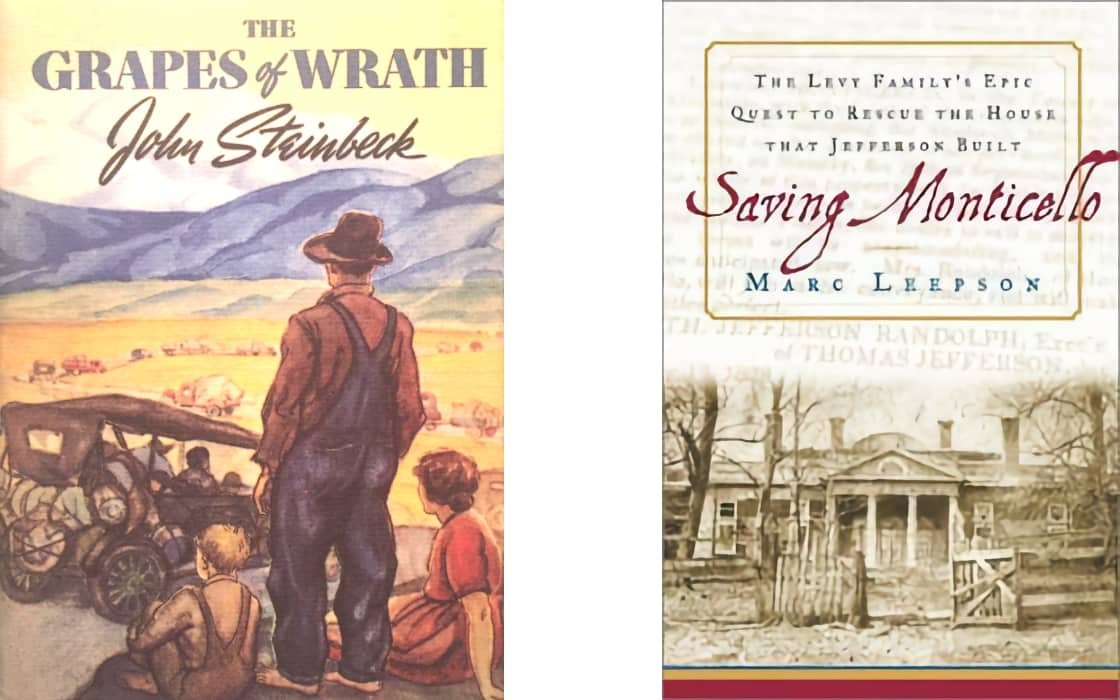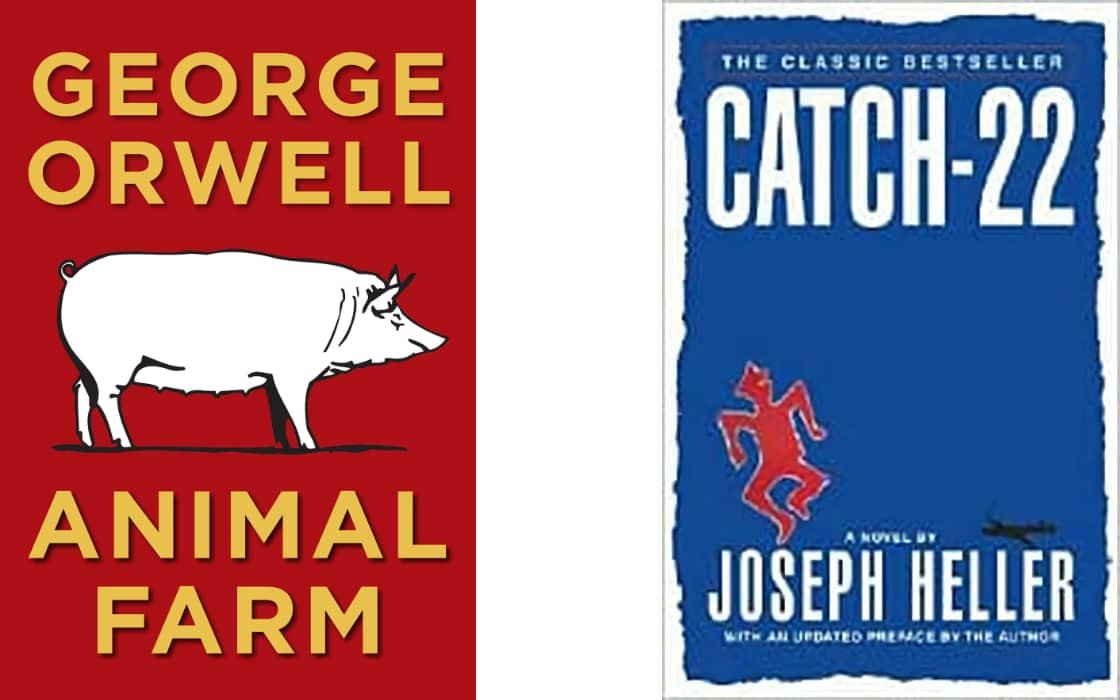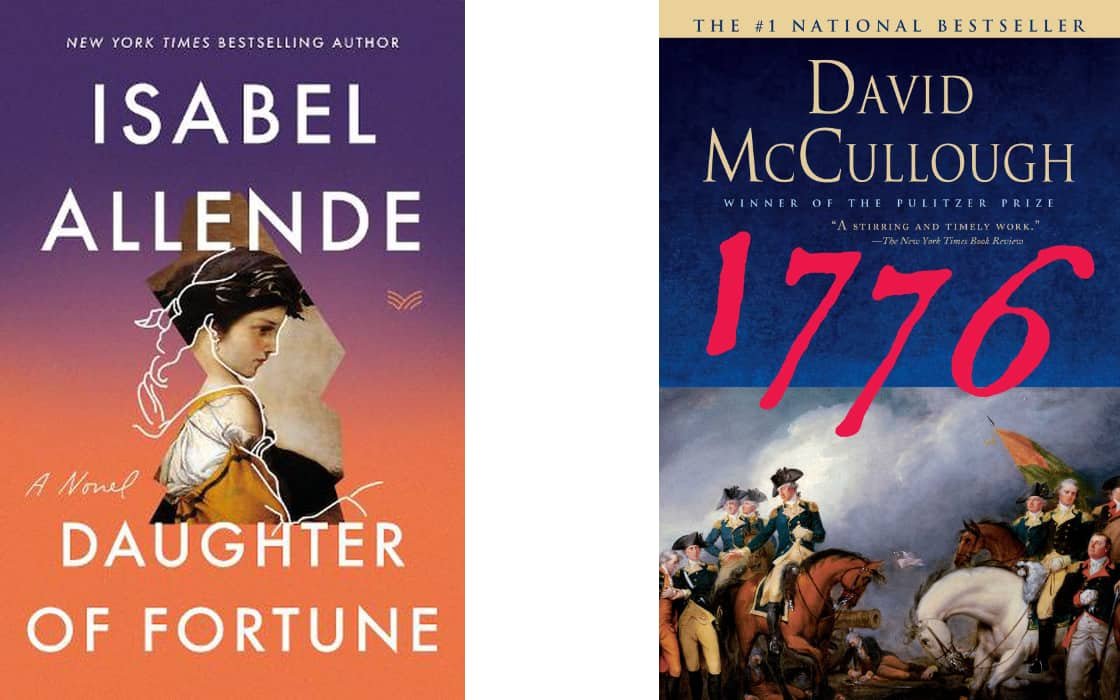It’s time again for our summer reading list, and thanks to the editors of Goodreads, we have some choice options for your high-school and college aged students to enjoy. Happy reading!
The Grapes of Wrath by John Steinbeck
The Pulitzer Prize-winning epic of the Great Depression, a book that galvanized—and sometimes outraged—millions of readers.
First published in 1939, Steinbeck’s Pulitzer Prize-winning epic of the Great Depression chronicles the Dust Bowl migration of the 1930s and tells the story of one Oklahoma farm family, the Joads—driven from their homestead and forced to travel west to the promised land of California. Out of their trials and their repeated collisions against the hard realities of an America divided into Haves and Have-Nots evolves a drama that is intensely human yet majestic in its scale and moral vision, elemental yet plainspoken, tragic but ultimately stirring in its human dignity. A portrait of the conflict between the powerful and the powerless, of one man’s fierce reaction to injustice, and of one woman’s stoical strength, the novel captures the horrors of the Great Depression and probes into the very nature of equality and justice in America. At once a naturalistic epic, captivity narrative, road novel, and transcendental gospel, Steinbeck’s powerful landmark novel is perhaps the most American of American Classics.
Saving Monticello: The Levy Family’s Epic Quest to Rescue the House that Jefferson Built by Marc Leepson
When Thomas Jefferson died on the Fourth of July 1826 -- the nation's fiftieth birthday -- he was more than $100,000 in debt. Forced to sell thousands of acres of his lands and nearly all of his furniture and artwork, in 1831 his heirs bid a final goodbye to Monticello itself. The house their illustrious patriarch had lovingly designed in the Blue Ridge Mountains of Virginia, his beloved "essay in architecture," was sold to the highest bidder. Saving Monticello offers the first complete post-Jefferson history of this American icon and reveals the amazing story of how one Jewish family saved the house that became a family home to them for 89 years -- longer than it ever was to the Jeffersons. With a dramatic narrative sweep across generations, Marc Leepson vividly recounts the turbulent saga of this fabled estate. Twice the house came to the brink of ruin, and twice it was saved, by two different generations of the Levy family. United by a fierce love of country, they venerated the Founding Fathers for establishing a religiously tolerant and democratic nation where their family had thrived since the founding of the Georgia colony in 1733, largely free of the persecutions and prejudices of the Old World.
Rich with memorable, larger-than-life characters, beginning with Thomas Jefferson himself, the story is cast with such figures as James Turner Barclay, a messianic visionary who owned the house from 1831 to 1834; the fiery Uriah Levy, he of the six courts-martial and teenage wife; the colorful Confederate Colonel Benjamin Franklin Ficklin, who controlled Monticello during the Civil War; and the eccentric, high-living, deal-making egoist Jefferson Monroe Levy. Pulling back the veil of history to reveal a story we thought we knew, Saving Monticello establishes this most American of houses as more truly reflective of the American experience than has ever been fully appreciated.
Crash by Jerry Spinelli
Meet Crash Coogan. Crash seems to be all brawn and no brains, but he will need more than mere muscles to face the upcoming challenges in his life. Award-winner Jerry Spinelli has created a hilarious, poignant story of a cocky seventh-grade super-jock.
The Once and Future King by TH White
T.H White′s masterful retelling of the Arthurian legend is an abiding classic. Exquisite comedy offsets the tragedy of Arthur′s personal doom as White brings to life the major British epic of all time with brilliance, grandeur, warmth and charm.
Animal Farm by George Orwell
A farm is taken over by its overworked, mistreated animals. With flaming idealism and stirring slogans, they set out to create a paradise of progress, justice, and equality. Thus, the stage is set for one of the most telling satiric fables ever penned –a razor-edged fairy tale for grown-ups that records the evolution from revolution against tyranny to a totalitarianism just as terrible.
When Animal Farm was first published, Stalinist Russia was seen as its target. Today it is devastatingly clear that wherever and whenever freedom is attacked, under whatever banner, the cutting clarity and savage comedy of George Orwell’s masterpiece has a meaning and message still ferociously fresh.
Catch-22 by Joseph Heller
Fifty years after its original publication, Catch-22 remains a cornerstone of American literature and one of the funniest—and most celebrated—books of all time. In recent years it has been named to “best novels” lists by Time, Newsweek, the Modern Library, and the London Observer.
Set in Italy during World War II, this is the story of the incomparable, malingering bombardier, Yossarian, a hero who is furious because thousands of people he has never met are trying to kill him. But his real problem is not the enemy—it is his own army, which keeps increasing the number of missions the men must fly to complete their service. Yet if Yossarian makes any attempt to excuse himself from the perilous missions he’s assigned, he’ll be in violation of Catch-22, a hilariously sinister bureaucratic rule: a man is considered insane if he willingly continues to fly dangerous combat missions, but if he makes a formal request to be removed from duty, he is proven sane and therefore ineligible to be relieved.
1984 by George Orwell
Critics have hailed 1984 as Orwells "most solid, most brilliant" work. Though the story of Nineteen Eighty-Four takes place thirty-five years hence, it is in every sense timely. The scene is London, where there has been no new housing since 1950 and where the city-wide slums are called Victory Mansions. Science has abandoned Man for the State. As every citizen knows only too well, war is peace.
To Winston Smith, a young man who works in the Ministry of Truth (Minitru for short), come two people who transform this life completely. One is Julia, whom he meets after she hands him a slip reading, "I love you." The other is O'Brien, who tells him, "We shall meet in the place where there is no darkness." The way in which Winston is betrayed by the one and, against his own desires and instincts, ultimately betrays the other, makes a story of mounting drama and suspense.
Brave New World by Aldous Huxley
The astonishing novel Brave New World, originally published in 1932, presents Aldous Huxley's vision of the future--of a world utterly transformed. Through the most efficient scientific and psychological engineering, people are genetically designed to be passive and therefore consistently useful to the ruling class. This powerful work of speculative fiction sheds a blazing critical light on the present and is considered to be Aldous Huxley's most enduring masterpiece.
The Picture of Dorian Gray by Oscar Wilde
The Picture of Dorian Gray is a 1891 gothic and philosophical novel by Irish writer and playwright Oscar Wilde. First published as a serial story in the July 1890 issue of Lippincott's Monthly Magazine, the editors feared the story was indecent, and without Wilde's knowledge, deleted five hundred words before publication.
Despite that censorship, The Picture of Dorian Gray offended the moral sensibilities of British book reviewers, some of whom said that Oscar Wilde merited prosecution for violating the laws guarding the public morality. In response, Wilde aggressively defended his novel and art in correspondence with the British press.
Wilde revised and expanded the magazine edition of The Picture of Dorian Gray (1890) for publication as a novel; the book edition (1891) featured an aphoristic preface — an apologia about the art of the novel and the reader. The content, style and presentation of the preface made it famous in its own literary right, as social and cultural criticism. In April 1891, the editorial house Ward, Lock and Company published the revised version of The Picture of Dorian Gray.
The Martian Chronicles by Ray Bradbury
The strange and wonderful tale of man’s experiences on Mars, filled with intense images and astonishing visions. Now part of the Voyager Classics collection.
The Martian Chronicles tells the story of humanity’s repeated attempts to colonize the red planet. The first men were few. Most succumbed to a disease they called the Great Loneliness when they saw their home planet dwindle to the size of a fist. They felt they had never been born. Those few that survived found no welcome on Mars. The shape-changing Martians thought they were native lunatics and duly locked them up.
But more rockets arrived from Earth, and more, piercing the hallucinations projected by the Martians. People brought their old prejudices with them – and their desires and fantasies, tainted dreams. These were soon inhabited by the strange native beings, with their caged flowers and birds of flame.
Daughter of Fortune by Isabel Allende
Orphaned at birth, Eliza Sommers is raised in the British colony of Valparaíso, Chile, by the well-intentioned Victorian spinster Miss Rose and her more rigid brother Jeremy. Just as she meets and falls in love with the wildly inappropriate Joaquín Andieta, a lowly clerk who works for Jeremy, gold is discovered in the hills of northern California. By 1849, Chileans of every stripe have fallen prey to feverish dreams of wealth. Joaquín takes off for San Francisco to seek his fortune, and Eliza, pregnant with his child, decides to follow him.
As we follow her spirited heroine on a perilous journey north in the hold of a ship to the rough-and-tumble world of San Francisco and northern California, we enter a world whose newly arrived inhabitants are driven mad by gold fever. A society of single men and prostitutes among whom Eliza moves--with the help of her good friend and savior, the Chinese doctor Tao Chien--California opens the door to a new life of freedom and independence for the young Chilean. Her search for the elusive Joaquín gradually turns into another kind of journey that transforms her over time, and what began as a search for love ends up as the conquest of personal freedom.
1776 by David McCullough
In this masterful book, David McCullough tells the intensely human story of those who marched with General George Washington in the year of the Declaration of Independence - when the whole American cause was riding on their success, without which all hope for independence would have been dashed and the noble ideals of the Declaration would have amounted to little more than words on paper.
At the center of the drama, with Washington, are two young American patriots, who, at first, knew no more of war than what they had read in books - Nathaniel Green, a Quaker who was made a general at thirty-three, and Henry Knox, a twenty-five-year-old bookseller who had the preposterous idea of hauling the guns of Fort Ticonderoga overland to Boston in the dead of Winter.
But it is the American commander-in-chief who stands foremost - Washington, who had never before led an army in battle. Written as a companion work to his celebrated biography of John Adams, David McCullough's 1776 is another landmark in the literature of American history.
Girl with a Pearl Earring by Tracy Chevalier
With precisely 35 canvases to his credit, the Dutch painter Johannes Vermeer represents one of the great enigmas of 17th-century art. The meager facts of his biography have been gleaned from a handful of legal documents. Yet Vermeer's extraordinary paintings of domestic life, with their subtle play of light and texture, have come to define the Dutch golden age. His portrait of the anonymous Girl with a Pearl Earring has exerted a particular fascination for centuries—and it is this magnetic painting that lies at the heart of Tracy Chevalier's second novel of the same title.
Girl with a Pearl Earring centers on Vermeer's prosperous Delft household during the 1660s. When Griet, the novel's quietly perceptive heroine, is hired as a servant, turmoil follows. First, the 16-year-old narrator becomes increasingly intimate with her master. Then Vermeer employs her as his assistant—and ultimately has Griet sit for him as a model.
The Kite Runner by Khaled Hosseini
1970s Afghanistan: Twelve-year-old Amir is desperate to win the local kite-fighting tournament and his loyal friend Hassan promises to help him. But neither of the boys can foresee what would happen to Hassan that afternoon, an event that is to shatter their lives. After the Russians invade and the family is forced to flee to America, Amir realises that one day he must return to an Afghanistan under Taliban rule to find the one thing that his new world cannot grant him: redemption.








